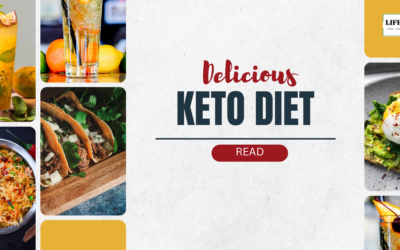Content marketing is a strategic marketing approach that focuses on creating and distributing valuable, relevant, and consistent content to attract and retain a clearly defined audience. It involves crafting and sharing content such as blog posts, videos, social media posts, and podcasts to educate, entertain, and engage your target audience. The key goal of content marketing is to build brand awareness, establish trust and credibility, and ultimately drive profitable customer action.
The importance of content marketing
Content marketing plays a crucial role in today’s digital landscape. It allows businesses to connect with their target audience in a more meaningful way by providing valuable information and addressing their pain points. By consistently producing high-quality content, businesses can position themselves as industry experts and thought leaders, gaining trust and credibility among their audience.
Moreover, content marketing helps businesses improve their search engine rankings. Search engines like Google prioritize websites that offer valuable, relevant, and original content. By creating content that aligns with your target audience’s search queries, you increase your chances of appearing in search results and driving organic traffic to your website.
Types of content marketing
Content marketing encompasses various types of content that can be used to engage with your audience. These include:
- Blog posts: Blogging is a popular form of content marketing that allows you to share in-depth articles on topics related to your industry or niche. It provides an opportunity to showcase your expertise and establish yourself as an authority.
- Videos: Video content is highly engaging and can be shared across various platforms, including social media and video-sharing sites like YouTube. Videos can be used to demonstrate products, share tutorials, or provide valuable insights.
- Social media posts: Social media platforms like Facebook, Instagram, and Twitter offer an excellent opportunity to connect with your audience and share bite-sized content. You can use social media to promote your blog posts, videos, and other content, as well as engage in conversations with your followers.
- Infographics: Infographics are visual representations of information or data. They are highly shareable and can effectively convey complex information in a visually appealing manner.
- Ebooks and whitepapers: Ebooks and whitepapers are comprehensive pieces of content that offer in-depth information on a specific topic. They are often used as lead magnets to capture email addresses and generate leads.
Creating a content marketing strategy
To unlock the full potential of content marketing, it’s crucial to have a well-defined strategy in place. Here are the key steps to creating a content marketing strategy:
- Define your goals: Start by identifying the specific goals you want to achieve through content marketing. Whether it’s increasing brand awareness, generating leads, or driving sales, having clear goals will help you stay focused and measure your success.
- Identify your target audience: Understand who your target audience is and what their needs, pain points, and interests are. This will help you create content that resonates with them and provides value.
- Conduct competitor research: Analyze what your competitors are doing in terms of content marketing. This will help you identify content gaps and opportunities that you can leverage.
- Choose the right content channels: Determine which channels are most effective in reaching your target audience. This could include your website, blog, social media platforms, email marketing, or even offline channels like events or print publications.
- Develop a content calendar: Plan your content creation and distribution schedule by creating a content calendar. This will ensure consistency and help you stay organized.
- Establish key performance indicators (KPIs): Define the metrics you will use to measure the success of your content marketing efforts. Examples of KPIs include website traffic, social media engagement, lead generation, and conversion rates.
By following these steps, you can create a content marketing strategy that aligns with your business goals and helps you achieve long-term success.
Conducting keyword research for content marketing
Keyword research is a crucial step in content marketing as it helps you identify the keywords and phrases that your target audience is using to search for information related to your industry or niche. By incorporating these keywords into your content, you increase your chances of ranking higher in search engine results and attracting organic traffic to your website.
Here are some steps to conduct effective keyword research:
- Brainstorm relevant topics: Start by brainstorming a list of topics that are relevant to your business and of interest to your target audience. Think about the questions they might have or the problems they are looking to solve.
- Use keyword research tools: Utilize keyword research tools like Google Keyword Planner, SEMrush, or Ahrefs to identify the most relevant keywords for your topics. These tools provide insights into search volume, competition, and related keywords.
- Analyze competitor keywords: Look at what keywords your competitors are targeting. This can give you an idea of the keywords that are driving traffic to their websites and help you identify any gaps in your content.
- Long-tail keywords: Consider targeting long-tail keywords, which are longer and more specific phrases. While they may have lower search volume, they often have higher conversion rates as they indicate more intent from the user.
- Optimize your content: Once you have identified your target keywords, incorporate them naturally into your content. Aim for a good balance between keyword optimization and providing valuable, engaging content.
Remember that keyword research is an ongoing process. Regularly monitor your website analytics and search engine rankings to identify new keyword opportunities and adapt your content strategy accordingly.
Creating high-quality and engaging content
Creating high-quality and engaging content is essential for successful content marketing. Here are some tips to help you create content that stands out:
- Understand your audience: Before creating content, take the time to understand your target audience’s needs, interests, and pain points. This will help you create content that resonates with them and provides value.
- Provide valuable information: Your content should offer valuable information and insights that your audience can’t find elsewhere. Focus on educating and solving your audience’s problems rather than solely promoting your products or services.
- Use a variety of formats: Experiment with different content formats to keep your audience engaged. This could include blog posts, videos, infographics, podcasts, or interactive quizzes.
- Tell stories: Humans are wired to connect with stories. Incorporate storytelling elements into your content to make it more relatable and memorable.
- Incorporate visuals: Visual elements like images, videos, and infographics can make your content more visually appealing and engaging. Use visuals to support your message and break up large blocks of text.
- Write compelling headlines: Your headline is the first thing that grabs your audience’s attention. Craft compelling headlines that pique curiosity and entice readers to click and read more.
Remember to consistently produce high-quality content and engage with your audience through comments and social media. Building a loyal and engaged audience takes time and effort, but it is key to the success of your content marketing strategy.
Optimizing content for search engines
Optimizing your content for search engines is crucial to ensure that it reaches your target audience. Here are some best practices for content optimization:
- Conduct on-page SEO: Optimize your content for search engines by incorporating relevant keywords into your title, headings, meta descriptions, and throughout the body of your content. However, avoid keyword stuffing, as this can negatively impact your search engine rankings.
- Create unique and original content: Search engines prioritize unique and original content. Avoid duplicating content from other websites, as this can result in penalties.
- Use descriptive URLs: Ensure that your URLs are descriptive and contain relevant keywords. This helps search engines understand what your content is about.
- Optimize images: Compress your images to improve page load times and include alt tags that describe the content of the image. This helps search engines understand and index your visual content.
- Build high-quality backlinks: Backlinks from reputable and relevant websites can significantly impact your search engine rankings. Seek opportunities to earn backlinks through guest blogging, influencer collaborations, or creating valuable content that others naturally want to link to.
- Optimize for mobile: With the majority of internet users accessing content through mobile devices, it’s crucial to ensure that your website and content are mobile-friendly. Use responsive design and optimize your content for smaller screens.
By implementing these optimization techniques, you increase the visibility of your content in search engine results and improve your chances of attracting organic traffic.
Promoting content through social media and other channels
Once you’ve created high-quality content, it’s essential to promote it effectively to reach your target audience. Social media platforms offer an excellent opportunity to distribute and amplify your content. Here are some tips for promoting your content through social media:
- Choose the right platforms: Identify the social media platforms where your target audience is most active. This could include Facebook, Instagram, Twitter, LinkedIn, or niche-specific platforms.
- Craft compelling social media posts: Create attention-grabbing social media posts that entice users to click and engage with your content. Use visuals, compelling headlines, and clear calls to action to drive traffic to your website.
- Engage with your audience: Social media is not just about broadcasting your content. Engage with your audience by responding to comments, asking questions, and initiating conversations. This helps build relationships and fosters brand loyalty.
- Leverage social media advertising: Consider using social media advertising to reach a wider audience and promote your content. Platforms like Facebook and Instagram offer highly targeted advertising options that can help you reach your ideal audience.
In addition to social media, you can promote your content through other channels such as email marketing, influencer collaborations, guest blogging, and industry forums. The key is to identify the channels that are most effective in reaching your target audience and develop a comprehensive promotion strategy.
Measuring the success of your content marketing efforts
Measuring the success of your content marketing efforts is crucial to understand what’s working and what needs improvement. Here are some key metrics to track:
- Website traffic: Monitor the number of visitors to your website and analyze which pages or blog posts are generating the most traffic.
- Social media engagement: Track the number of likes, comments, shares, and followers on your social media platforms. This indicates the level of engagement and interest in your content.
- Conversion rates: Measure the number of leads or sales generated from your content marketing efforts. This could include email sign-ups, form submissions, or purchases.
- Time on page: Analyze how much time visitors spend on your website or blog posts. This indicates the level of engagement and interest in your content.
- Search engine rankings: Monitor your search engine rankings for targeted keywords. An increase in rankings indicates that your content is resonating with search engines and attracting organic traffic.
By regularly analyzing these metrics, you can gain insights into the effectiveness of your content marketing strategy and make data-driven decisions to optimize your efforts.
Best practices for content marketing
To maximize the effectiveness of your content marketing, here are some best practices to keep in mind:
- Consistency is key: Consistently produce high-quality content and publish it regularly. This helps build trust and credibility with your audience and keeps them engaged.
- Focus on quality over quantity: While consistency is important, quality should never be compromised. It’s better to produce fewer pieces of high-quality content than to publish low-quality content frequently.
- Stay up-to-date with industry trends: Keep an eye on industry trends and the latest developments in your niche. This allows you to create timely and relevant content that resonates with your audience.
- Repurpose your content: Repurpose your existing content into different formats to reach a wider audience. For example, you can turn a blog post into a video or create an infographic based on a podcast episode.
- Engage with your audience: Actively engage with your audience through comments, social media, and email marketing. Respond to their questions, address their concerns, and show appreciation for their support.
- Continuously learn and adapt: Content marketing is an ever-evolving field. Stay curious, learn from your successes and failures, and adapt your strategy based on new trends and insights.
By following these best practices, you can create a content marketing strategy that drives meaningful results and helps you achieve your business goals.
Tools and resources for content marketing
To support your content marketing efforts, here are some useful tools and resources:
- Content management systems (CMS): Platforms like WordPress, Drupal, or Joomla provide a user-friendly interface for creating and managing your website or blog.
- Keyword research tools: Utilize tools like Google Keyword Planner, SEMrush, or Ahrefs to conduct keyword research and identify relevant keywords for your content.
- Social media management tools: Tools like Hootsuite, Buffer, or Sprout Social help you schedule and manage your social media posts across multiple platforms.
- Analytics tools: Google Analytics provides in-depth insights into your website traffic, user behavior, and conversion rates. Use it to track the success of your content marketing efforts.
- Content creation tools: Tools like Canva, Piktochart, or Adobe Spark enable you to create professional-looking visuals and infographics without design skills.
- Industry publications and blogs: Stay updated with the latest trends and best practices in content marketing by following industry publications and influential blogs in your niche.
These tools and resources can streamline your content creation and distribution process, saving you time and helping you achieve better results.
Conclusion
Content marketing is a powerful strategy that allows businesses to connect with their target audience, build brand awareness, and drive profitable customer action. By understanding the importance of content marketing, creating a well-defined content marketing strategy, conducting effective keyword research, creating high-quality and engaging content, optimizing for search engines, promoting through various channels, measuring success, and following best practices, businesses can unlock the true potential of content marketing and achieve long-term success. Remember to continuously learn, adapt, and experiment with new ideas to stay ahead in the ever-changing world of content marketing.
FAQs
1. What is content marketing, and why is it important for businesses?
Content marketing is a strategic marketing approach focused on creating and distributing valuable, relevant, and consistent content to attract and retain a clearly defined audience. It’s important for businesses because it helps build brand awareness, establish thought leadership, drive traffic to websites, generate leads, and ultimately, increase sales and customer loyalty.
2. How do I create an effective content marketing strategy?
To create an effective content marketing strategy, start by defining your goals and target audience. Research to understand your audience’s needs and preferences. Develop a content plan that includes the types of content you’ll create, channels you’ll use for distribution, and a publishing schedule. Ensure your content aligns with your brand’s voice and values and incorporates SEO best practices.
3. What types of content are most effective for engaging my target audience?
The most effective types of content depend on your audience’s preferences and the stage of the buyer’s journey they’re in. Generally, visual content like videos, infographics, and images tend to be engaging. However, other formats such as blog posts, podcasts, webinars, and social media posts can also be effective. It’s essential to experiment with different types of content and analyze the results to determine what resonates best with your audience.
4. How can I measure the success of my content marketing efforts?
You can measure the success of your content marketing efforts by tracking various metrics such as website traffic, engagement (likes, comments, shares), conversion rates, email subscriptions, and sales attributed to your content. Utilize analytics tools like Google Analytics, social media insights, and marketing automation platforms to gather data and evaluate the performance of your content.
5. What are some best practices for optimizing content for search engines (SEO)?
Some best practices for optimizing content for SEO include conducting keyword research to identify relevant keywords, incorporating keywords naturally into your content (including titles, headings, and meta descriptions), optimizing images with descriptive alt text, creating high-quality and valuable content that addresses user intent, optimizing page load speed, and earning backlinks from reputable websites. Regularly monitor and update your content to maintain its relevance and effectiveness in search results.

Welcome to LifeSnipet! At LifeSnipet, we’re your ultimate source for the latest health updates. Specializing in health and fitness-related diseases, we delve deep into Ayurvedic techniques, providing you with a comprehensive understanding of well-being. Explore our real-time updates, detailed articles, and ancient Ayurvedic wisdom for a holistic approach to health. Embark on a journey to a healthier, vibrant life with LifeSnipet – where your well-being is our priority!











